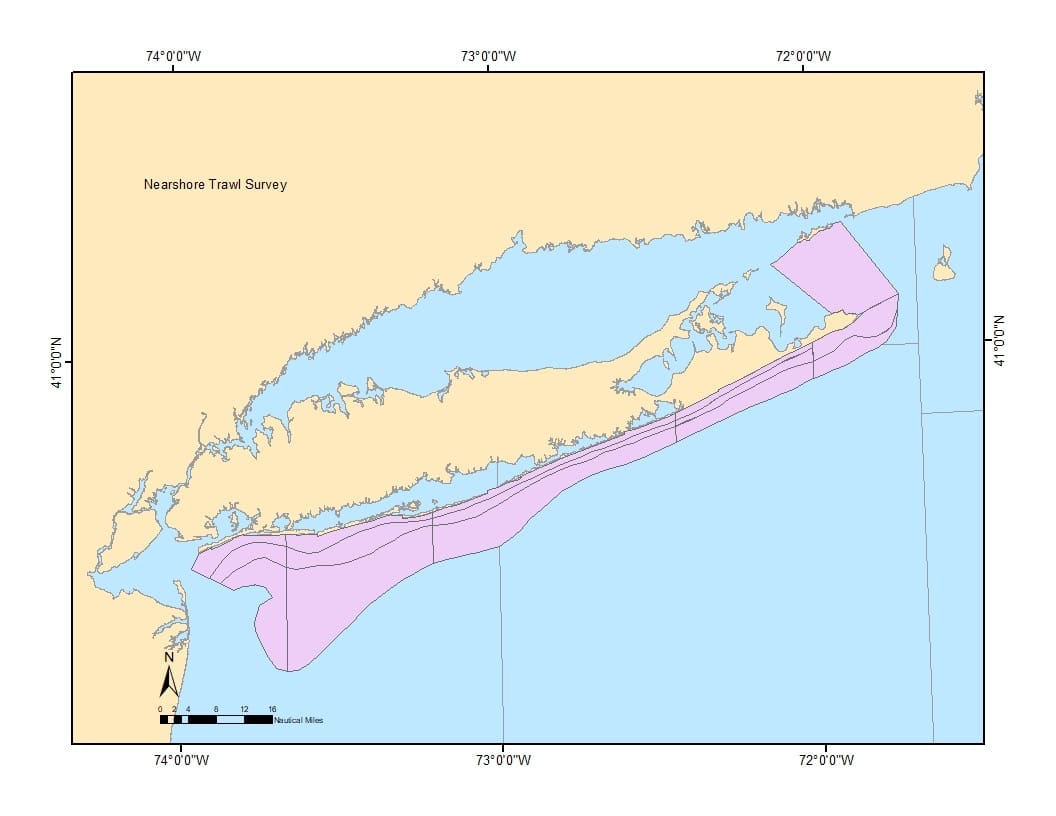Once the tow is on board, sturgeon are taken out first and put in live wells. Sturgeon are tagged both conventionally and acoustically on these surveys. Sturgeon are released once tagging is complete. Striped Bass are then removed from catch and placed in live wells. After sturgeon conventional tags are done, the Striped Bass will be processed (length, weight, dart tag, and scales) and released. Any fish/invertebrate to be tagged will be placed in the live well immediately and worked up after any Striped Bass. All other species are separated out by species and then size.
Collective weights are taken for all species. A total of 30 individuals of each species are separated out by size for the subsample to be measured. Total length is measured for finfish. Carapace width is measured for invertebrates besides American Lobster (carapace length) and squid species (mantle length).
An extensive collection of biological samples is taken during each cruise. This subsampling procedure requires 5 samples per tow for each species of interest to have individual measurement and weight taken. All specimens are taken back to the lab for otolith removal, scale and opercula samples, and sex data for certain species. Otoliths are removed from American Eels, Atlantic Menhaden, Black Sea Bass, Bluefish, Summer Flounder, and Weakfish (note: otoliths are also taken from Striped Bass if they inadvertently die). Scales are taken from Atlantic Menhaden and Striped Bass, and opercula are taken from Tautog. Five marine invertebrates including Blue Crab, Lady Crab, Jonah Crab, Rock Crab, Horseshoe Crab and Channeled and Knobbed Whelk are also individually measured and weighed each tow. Blue Crab, Lady Crab, Jonah Crab, Rock Crab and Horseshoe Crab are all sexed and maturity, including presence of eggs, is noted for Blue Crabs. Blue Crab and Horseshoe Crab are also tagged with conventional tags before released back into the water.



